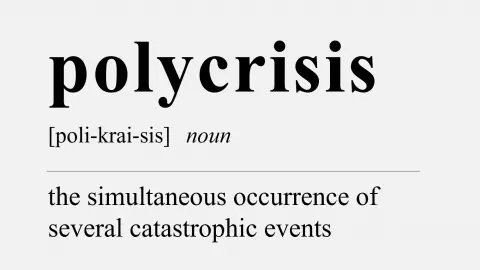World trade shows signs of diversification
Large shifts in world trade patterns are occurring as advanced economies – especially the US – are diversifying input sourcing. With extreme pandemic effects fading, supply chain problems are unlikely to return at a similar scale as seen in recent years
Supply chain problems are easing rapidly
The main problems around world trade in 2021 and 2022 were related to disrupted supply chains. Transport costs soared on the back of container shortages, lockdowns caused production stops and inputs were in short supply amid strong demand. This resulted in spiking container rates, high supply delivery times and depleted inventories. Since mid-last year, more or less coinciding with the peak in world trade, we’ve started to see a turnaround in supply chain problems. They have eased substantially since then as global demand for goods has weakened and production capacity has been improving. Arrival reliability of container vessels has also improved to more than 60% in March 2023 compared to 30% at the start of 2022 which helps to improve the global supply system.
Supply chain issues have faded quickly in recent months

The broad-based supply chain problems of recent years were clearly rooted in the pandemic. Overheating global demand for goods while supply was still very restricted because of pandemic-related limitations caused a rare mismatch of supply and demand resulting in extraordinary imbalances and widespread shortages. Since then, demand has been normalising and for many inputs, new production capacity has been coming online. This has resulted in rapidly improving supply chain problems.
The lesson for the future is that the unique nature of the shock allowed for such widespread problems to occur. While we expect that shortages and supply risks will continue to feature on the economic and business agenda as labour shortages remain more persistent and the energy transition could lead to new supply squeezes, we do deem it unlikely that similar broad-based shortages will return without a shock the size of the pandemic.
Normalisation and easing demand for goods made world trade contract
Since September, world trade has fallen by around 4%. The pandemic shock to global consumption has likely played a large role in trade trends in recent years. The initial phase of the pandemic resulted in lopsided consumption towards goods, which has now reversed towards services demand. Businesses also increased inventories early last year as supply chain problems persisted, which is now reversing. While the ‘bullwhip effect’ of stockpiling across the supply chain added to trade volumes earlier, the process of stock reduction now creates extra slack in the figures. Although this process has not been finished yet in the first quarter of 2023, we expect trade to recover mildly over the course of this year on the back of the reopening of China, starting at the end of the first quarter.
All in all, we expect total trade to grow at just 1% compared to last year, with 2024 offering a 2% gain in trade volume. This means trade will drop below global GDP growth and continues in the slow lane compared to long-term averages.
Structurally, advanced markets are diversifying trade partners – particularly the US
It looks like diversification of sourcing products is the most dominant response to the supply chain problems seen in recent years. That is not just the case anecdotally and indicated in surveys, we also find this when looking at import country concentration. To gauge whether trade has been diversifying in terms of countries, we use a Herfindahl–Hirschman index to determine concentration. Using the IMF DOTS dataset on trade, we can go back several decades to find out how concentrated or diversified imports have been for advanced markets.
Concentration of import sourcing has been the trend since 2016

Since 2016, we have seen steady declines in our import concentration index for advanced economies. This indicates that we indeed see some form of diversification happening in terms of imports from different countries. Interestingly, we do see notable differences between Europe and the US. In the EU, we note relatively little diversification so far outside of the pandemic shock. The US is the main diversification force at the moment. American imports are now a lot more diversified than they were in 2016 and this is mainly driven by a clear trend towards a lower dependency on China for imports.
Geopolitical problems are heating up and are starting to have more of a structural impact on world trade. We see that advanced economies are diversifying trade partners, mainly in the US for now, but this trend is likely to take off in Europe as well thanks to expected higher trade barriers and continued geopolitical concerns in the years ahead.
Download
Download article
12 May 2023
ING Monthly: We’re in a polycrisis – and this is what it means This bundle contains 16 articlesThis publication has been prepared by ING solely for information purposes irrespective of a particular user's means, financial situation or investment objectives. The information does not constitute investment recommendation, and nor is it investment, legal or tax advice or an offer or solicitation to purchase or sell any financial instrument. Read more

